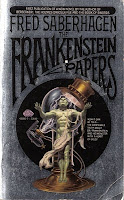I just wanted to do something quick this week, but hopefully you’ll all be impressed by the clever way I make this particular point.
Grab a piece of paper and write these things down real quick. Don’t think, don’t second-guess yourself, just scribble down the first things that come to mind, okay? I want you to write down a television show about an island, a number from one to four, a Disney princess, and a vegetable.
We’ll get back to that in a bit.
Every now and then you’ll hear some guru talk about Jung or the zeitgeist or collective subconscious. They’re pretty terms, but I’d guess four out of five times the people slinging them don’t really know what they mean.
I think it’s much simpler than that. Nowadays we’re all watching the same shows and movies and listening to the same music. A lot of us are reading the same highly-recommended books. Through the wonders of the internet, we can spend an hour each morning getting news updates from around the country and around the world. Plus, all of us can discover the same Korean rap star within a week of each other.
I’d guess at least ninety percent of you reading this had a basic Western education. Most of us probably went to college for a few years, too. We’ve compared banks and apartment-shopped and made budgets for either work or the home. Maybe both.
We all share a lot of the same experiences, and we draw on those experiences to make the same decisions. Because of this, we tend to be drawn to the same things—especially when you start dividing folks into fans of different genres and styles.
This is why you should never, ever go with the first idea you think of. Because the odds are very good that at least a thousand other people just thought of it, too. And half of those people are going to attempt something with that idea.
I’ve talked about screenplay contests and some of the recurring concepts that made me and other readers cringe. One of those was the Current Events script. It’s a screenplay based off a recent, high-profile story that got a fair amount of news coverage. They’re almost always rushed and, more to the point, there’s usually at least half-a-dozen of them about the same event. And that’s just what one individual reader sees, so odds are there are a few hundred of these scripts floating around each contest, all based off the same event.
A few months back I started toying with the idea of a new book, one that could possibly be the start of a new series. Almost immediately, I came up with something that I thought was fairly clever and very open-ended. I mentioned it to a friend over Labor Day weekend, though, and she said it sounded familiar. She whipped out her Kindle, browsed Amazon for a minute, and came up with a name and title for me.
Well, I got home and started checking it out. It turns out the other author and I had both come up with the exact same premise. Our main characters had the same background, the same life-changing event with the same results (and requiring the same medical breakthrough), and the same changes in their life because of it. Different plots, but the story of our main character was almost identical. The other author had just come up with it eighteen months earlier than me.
We all get exposed to the same input and process it in similar ways. That’s why the first thing that comes to mind is usually the thing that everyone else thought of, too. Even if I think I’m a clever and exceedingly smart writer, I’m going to make the same first choices as everyone else.
Don’t believe me? Remember those things I asked you about up above? I’m willing to bet that most of you wrote down LOST, three, Cinderella, and carrots.
What did I get? Three out of four right? I bet I got four out of four for some of you.
When it comes to plot, try to avoid going with the first thing that comes to mind. If you’re feeling gutsy, avoid the second and third, too. That’s what makes a good writer—going beyond the obvious.
Next time, unless I get another really cool request, I’m thinking I might talk a little bit about characters.
Until then, go write.




